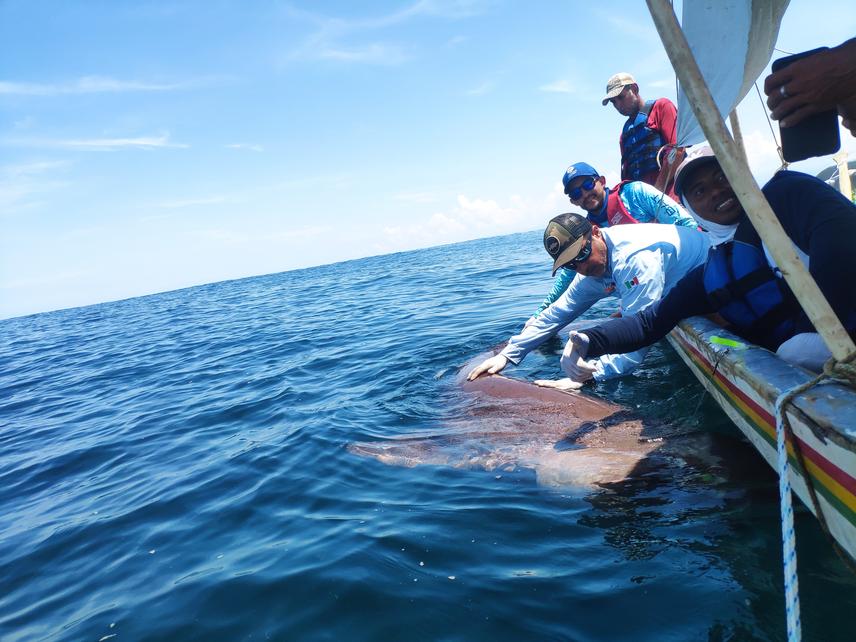Julio Francisco Sánchez Jiménez
Guatemala’s Caribbean slope harbours a little-known community of deep-sea sharks, rays, and chimaeras whose slow growth, late maturity, and low fecundity make them extremely vulnerable to even moderate fishing pressure. As coastal stocks continue to decline, artisanal fleets from the village of El Quetzalito have expanded their operations to depths of 300–450 m along the margin of the Cayman Trench, incidentally, capturing species such as Centrophorus granulosus (EN), Dalatias licha (VU), and Hexanchus griseus (NT). Because landings are rarely identified beyond “shark” or “ray,” management agencies lack the basic information needed to evaluate population status or set science-based limits.

Capture and recording of a Hexanchus griseus. © Fundación Mundo Azul.
This project will generate the first comprehensive assessment of deep-sea chondrichthyan diversity, catch composition, and catch rates in Guatemala. Working side-by-side with ten experienced fishers, we will conduct 30 fishery-independent longline surveys between September 2025 and March 2026. All specimens will be measured, sexed, and photographed; a fin-clip will be preserved in ethanol, tagged individuals will be released alive whenever possible, and carcasses required for identification will be landed for voucher deposition. A reference library of at least 50 tissue samples will be created and analysed via DNA barcoding in partnership with Mote Marine Laboratory to resolve taxonomic uncertainties, especially within the genera Centrophorus and Squalus.
Parallel to the field component, two hands-on workshops will train local fishers in species recognition, safe handling, and data recording, while illustrated infographics will be distributed to schools and landing sites to raise broader community awareness. Findings will be synthesised in a technical report for Guatemala’s Fisheries Authority (DIPESCA) and presented at the National Shark Working Group, providing the evidence base to discuss Fishery Recovery Zones or other spatial measures inside the Punta de Manabique Wildlife Refuge.
By combining robust scientific methods with capacity building and policy engagement, the project will:
- Establish a verifiable baseline of species diversity and abundance for Guatemala’s deep-sea elasmobranchs.
- Quantify the interaction between artisanal gear and vulnerable species, informing targeted mitigation.
- Empower fishers as co-researchers, fostering stewardship and long-term monitoring beyond the grant period.
Ultimately, this initiative will close a critical data gap, strengthen national conservation planning, and contribute to the global effort to secure the future of deep-sea chondrichthyans.